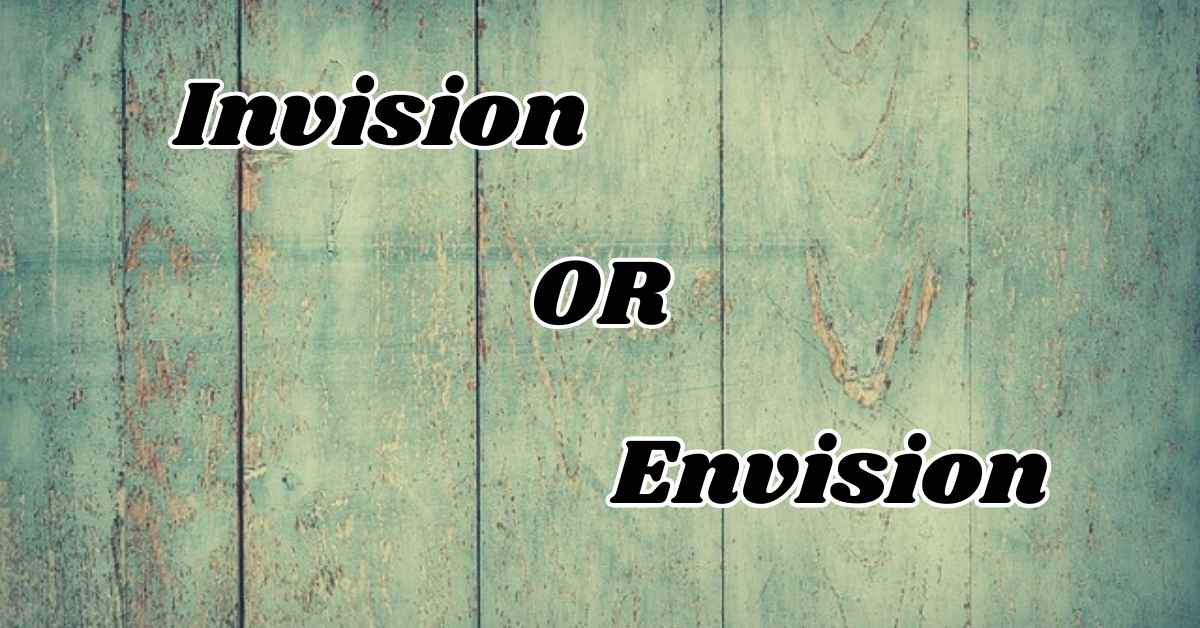Invision or Envision can often confuse even the most seasoned writers. While they may sound similar, their meanings are quite different. Envision refers to the ability to imagine or visualize something, often related to future possibilities or creative ideas.
In contrast, Invision is a specific software tool used in design and collaboration, helping teams bring their projects to life. Understanding the distinction between these two terms is crucial for clear communication, especially in professional settings.
This article will explore the origins, definitions, and proper usage of Invision and Envision, ensuring you can confidently use them in your writing without falling into common pitfalls.
Quick Summary
Invision is often mistakenly used instead of Envision, which can lead to confusion. While Invision refers to a specific software tool used for design and collaboration, Envision means to imagine or visualize something. Knowing the difference is important for clear communication.
Understanding Invision or Envision
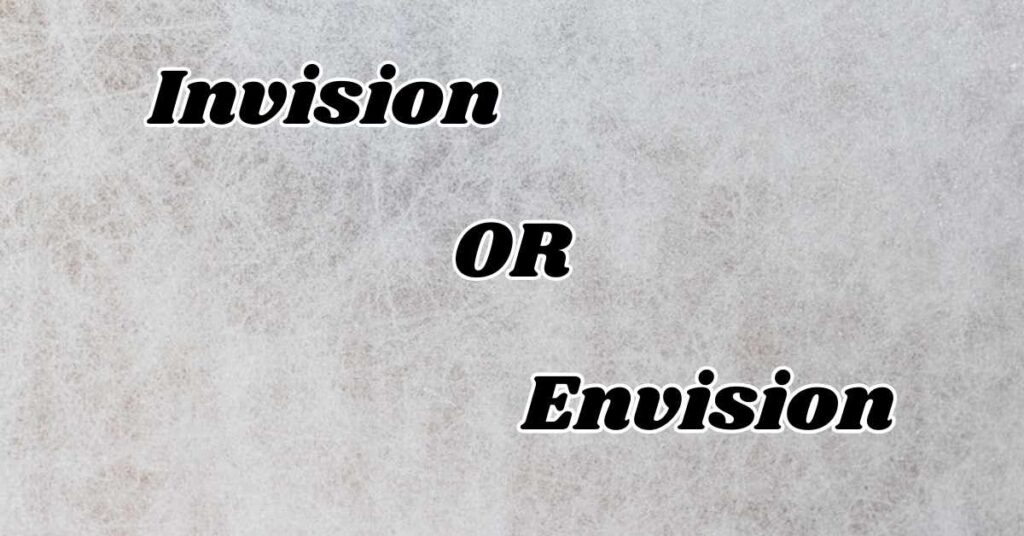
Understand the distinction between Invision and Envision, it’s essential to grasp their definitions. Envision means to create a mental image of something that may happen in the future. For example, when you think about your goals, you are envisioning them.
On the other hand, Invision is a brand name for a popular design tool that helps teams create prototypes and collaborate on projects. This difference is crucial for effective communication, especially in professional settings.
Confusion Between Invision and Envision
The confusion between Invision and Envision often arises from their similar sounds and spellings. Many people accidentally type or say Invision when they mean to say Envision, leading to misunderstandings.
This mix-up can occur in various contexts, such as emails, reports, or even casual conversations. Recognizing this common error is the first step toward avoiding it.
Common Reasons for the Mix-Up
Several factors contribute to the mix-up between Invision and Envision. First, their phonetic similarities can lead to mispronunciation or mishearing. When spoken quickly, these words may sound alike, resulting in what linguists call a phonetic mistake.
Additionally, the visual similarity of the words can cause people to type the wrong one without realizing it. Lastly, with technology playing a significant role in our writing today, autocorrect features may inadvertently change Envision to Invision, perpetuating this confusion.
Examples of Misuse
To highlight this issue further, consider these examples: “I will invision my success” should be “I will envision my success.” Another common mistake is saying “The team uses Invision for brainstorming,” when they actually mean “The team uses Envision for brainstorming.”
Such errors can lead to misunderstandings in both personal and professional contexts.
Origins of the Envision
Envision has a rich history that traces back to Latin roots. It combines the prefix “en-” with “vision,” which originates from the Latin word “visio,” meaning “sight” or “vision.”
This connection highlights the concept of creating a mental image or idea, emphasizing the act of visualizing possibilities.
Historical Roots
The Latin word “visio” translates to “sight” or “vision,” while the prefix “en-” means “to cause” or “to put into.”
The earliest known use of envision in English dates back to the 1920s, with Lytton Strachey being one of the first to employ it in writing. However, the concept of visualizing or imagining something has existed in language for much longer.
Development Over Time
In the 17th century, envision evolved from earlier forms like “envisage,” which means to look at or see. Initially, its usage was primarily found in literary and philosophical contexts.
Today, envision is widely recognized in both formal and informal writing as a way to describe the act of imagining or conceptualizing future events or ideas.
Old Spellings to Modern Usage
Language evolves over time, and so does spelling. The transition from various spellings of envision to its modern form reflects this evolution.
Historical Spellings
Earlier forms like envisage were used interchangeably with envision, stemming from similar roots but developing distinct meanings in modern usage.
Other historical variations included spellings like “envisionne” or “envisione,” which reflect old English orthography and showcase how language adapts over time.
Standardization
As English spelling became more standardized in the 19th century, envision emerged as the accepted form. Today, it is the preferred spelling in both American and British English, as outlined by major style guides.
This standardization demonstrates how language adapts and evolves while maintaining clarity and consistency in communication.
Invision: Definition and Usage
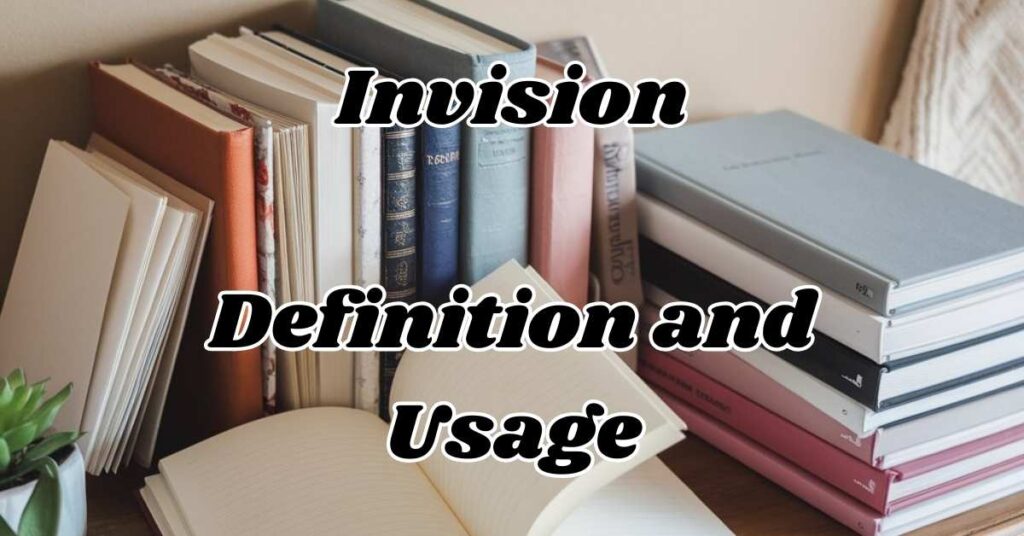
Invision is a leading software tool designed specifically for product design and collaboration. It allows designers to create interactive prototypes and mockups, streamlining the design process for digital products.
With Invision, teams can easily share their work, gather feedback, and make necessary adjustments in real-time. This platform supports a range of functionalities, including project management, client presentations, and animation features, making it a comprehensive solution for designers.
As a result, Invision has become a popular choice among professionals aiming to enhance their workflow and improve communication within design teams.
Invision Definition
Invision is primarily recognized as a software tool designed for designers and developers to create interactive prototypes. It allows teams to collaborate seamlessly on projects by providing a platform where they can share ideas visually.
Invision Usage
When using Invision, one might say, “We used Invision to develop our app prototype.” This indicates a clear understanding that you are referring to the software rather than attempting to convey an idea or vision. Using it correctly demonstrates familiarity with both design tools and effective communication strategies.
Why “In vision” Isn’t a Word
Many people use the term casually, it’s important to note that In vision is not a standard English word but rather a brand name. Recognizing this distinction is key for proper usage; treating it as a regular word can lead to confusion among readers who expect standard English terms.
The Impact of Language Evolution on Spelling and Usage
The evolution of language directly affects spelling and usage. As words are borrowed from other languages or adapted to new contexts, their spellings may change to reflect phonetic shifts or cultural influences.
Standardization efforts, particularly with the advent of the printing press, aimed to unify spelling but could not eliminate regional variations. Consequently, understanding these historical changes helps clarify why certain spellings seem irregular or inconsistent today.
How Language Changes
Language is not static; it evolves over time due to various influences. Changes in pronunciation, grammar, and vocabulary occur as societies grow and shift. For instance, the Norman Conquest significantly impacted English, introducing many French words and altering its structure.
Additionally, technological advancements and cultural exchanges continue to shape how we communicate, leading to new expressions and spelling variations. This ongoing evolution reflects the dynamic nature of human interaction.
Envision: Definition and Usage
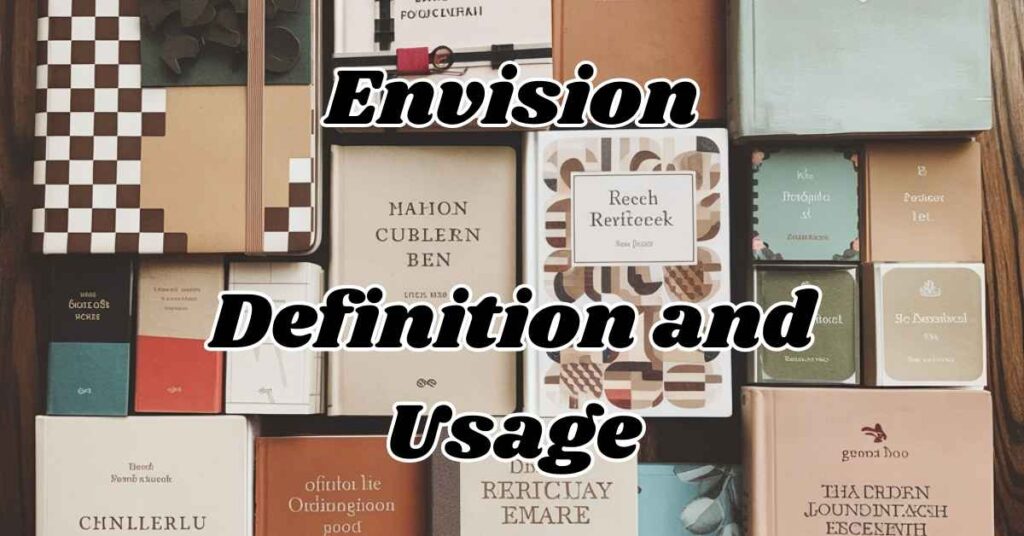
Envision is a verb that means to imagine or visualize something that has not yet occurred. It involves creating a mental picture of future possibilities or scenarios.
This term is often used in contexts such as goal-setting, planning, and creative thinking, where individuals conceptualize their aspirations or ideas to bring them to life.
Envision Definition
Envision derives from the combination of the prefix “en-” meaning “to cause” and “vision,” which relates to sight. It emphasizes the act of forming a mental image or idea.
By using envision, people express their ability to foresee potential outcomes or developments, making it a valuable term in both personal and professional settings.
What Is the Adjective of Envision?
The adjective form of envision is “envisaged,” which describes something that has been imagined or visualized. This form allows users to describe ideas that have already been conceptualized.
Envision Usage
You might say, “I can easily envision my future career,” indicating that you have a clear mental picture of what you want to achieve. Using this term effectively demonstrates your ability to think ahead and plan strategically.
Correct Usage of En vision in American and British English
American English
In American English, using “envision” is straightforward: “She envisions herself as a leader.” This sentence clearly illustrates how one might use envision in everyday conversation.
British English
British English also accepts this usage: “He envisages a better world.” Note that some British speakers prefer “envisage”or “envision.” This slight variation highlights regional differences in language usage while maintaining similar meanings.
Synonyms of Envision
Synonyms for envision include:
- Visualize
- Conceive
- Picture
- Conceptualize
- Foresee
- Dream
- Anticipate
- Expect
- Plan
Side by Side Comparison
side-by-side comparison of Invision and Envision presented in a table format:
| Aspect | Invision | Envision |
| Definition | A design collaboration tool for creating prototypes and mockups. | To imagine or visualize something that could happen in the future. |
| Part of Speech | Noun (brand name). | Verbs. |
| Origin | Brand name with no historical linguistic roots in English. | Derived from Middle English, combining “en-” and “vision.” |
| Examples of Usage | “We used Invision to develop our app prototype.” | “I can easily envision my future career.” |
Everyday Usage Examples

Understanding how to use Invision in everyday conversation is essential for clear communication, especially in design and development contexts. As a collaborative tool, Invision allows teams to create prototypes and share ideas efficiently.
By incorporating it into your vocabulary, you can effectively discuss project workflows, design processes, and team collaboration, ensuring everyone is on the same page regarding the tools being utilized.
Invision Example
Here are examples of how to use Invision in a sentence:
- Our team relies on Invision to streamline the design process for our new app.
- We presented our latest project using Invision, allowing clients to interact with the prototype.
- Invision helps designers gather feedback quickly and make necessary adjustments.
- The collaborative features of Invision make it easier for remote teams to work together.
- By using Invision, we can visualize our ideas before moving into development.
How Language Evolution Affects Spelling
Language evolution significantly influences spelling as words adapt to cultural shifts, technological advancements, and social changes. Over time, the way we pronounce and write words can change, leading to variations in spelling.
These transformations often reflect the dynamic nature of communication, where new terms emerge and old ones fade away, resulting in a rich tapestry of linguistic diversity.
Language Evolution
Language evolution occurs due to various factors, including historical events, migration, and technological progress. As societies interact and exchange ideas, they influence each other’s languages.
For example, the introduction of new technologies often brings new vocabulary that requires standardized spelling. This ongoing evolution highlights how language is shaped by human experience and societal development.
Impact on Usage
The impact of language evolution on usage is profound. As spelling changes occur, they can lead to variations in how words are understood and used in different contexts. This can create confusion or miscommunication if people are unaware of these shifts.
Understanding the history of language helps individuals navigate these changes effectively, ensuring clarity in both written and spoken communication.
Envision vs. Invision: Clarity on Proper Spelling
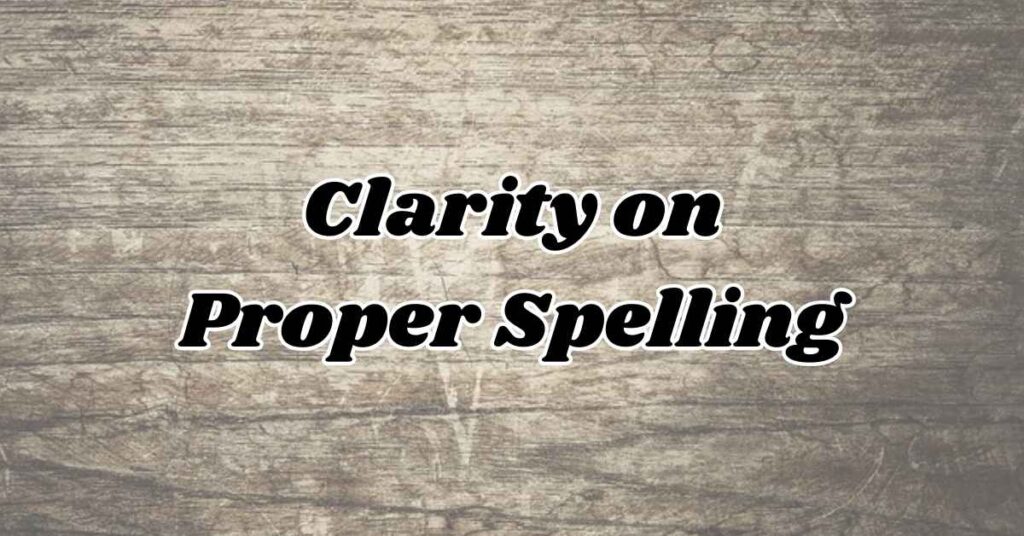
Understanding the difference between envision vs invision is crucial for effective communication. Envision refers to the act of imagining or visualizing something, while invision is a brand name for a design collaboration tool.
Recognizing this distinction helps prevent common spelling errors and ensures that your writing is clear and accurate, especially in professional contexts where precise language matters.
Comparison
When comparing envision and invision, it’s essential to note their distinct meanings and usages. Envision is a verb used in various contexts, such as goal-setting and creative thinking. In contrast, invision functions solely as a proper noun referring to a specific software tool.
This fundamental difference highlights the importance of using each term appropriately to maintain clarity in communication.
Why the Confusion
The confusion between envision and invision often arises from their similar spellings and sounds. Many people mistakenly use invision when they mean envision, leading to misunderstandings.
Additionally, the prevalence of technology and branding can contribute to this mix-up, as individuals may encounter the term invision frequently in design discussions without recognizing its specific context.
Why Invision Is a Persistent Misspelling
The persistence of Invision as a misspelling can be attributed to several factors. One major reason is the similarity in pronunciation between Invision and Envision, especially in casual speech.
This phonetic confusion often leads people to mistakenly use Invision when they intend to write Envision. Additionally, visual similarities and typographical errors further contribute to this ongoing issue, making it essential to understand the distinctions between the two terms.
Visual Similarity
The visual similarity between Invision vs Envision plays a significant role in the confusion surrounding their usage. Both words share nearly identical letters, differing only in the initial vowel.
This resemblance can easily lead to mistakes while typing, as individuals may inadvertently substitute one for the other without realizing it. Such visual patterns create a false sense of correctness, encouraging the continued misspelling of Envision as Invision.
Phonetic Confusion
Phonetic confusion is another key factor contributing to the persistent misspelling of Invision. When spoken quickly, both words sound remarkably alike, making it challenging for listeners to distinguish between them.
This similarity can lead to misinterpretation during conversations, where someone may hear envision but think it’s pronounced as invision. Understanding this phonetic overlap is crucial for avoiding errors when writing or speaking.
Influence of Technology
The influence of technology significantly impacts how we perceive and use language today. Autocorrect features on smartphones and computers often suggest Invision as a valid alternative when typing Envision, leading to frequent errors.
This reliance on digital tools can distort our understanding of proper spelling and usage. Additionally, the informal nature of online communication may perpetuate these mistakes, making it essential to remain vigilant about correct terminology in both personal and professional writing.
How to Avoid This Mistake
To avoid mixing up these terms:
- Take your time when writing; slow down!
- Proofread your work before sending it out; double-check!
- Use grammar checking tools available online; leverage technology!
- Familiarize yourself with both terms through reading resources about language usage; educate yourself!
Read Also: Hommus vs Hummus: Which One is Correct?
Conclusion
The difference between Invision or Envision is essential for effective communication. While envision refers to the act of imagining or visualizing future possibilities, Invision is a specific design collaboration tool.
Understanding these distinctions helps prevent common spelling errors and enhances clarity in both writing and conversation. By familiarizing yourself with the correct usage of these terms, you can communicate more effectively in professional and personal contexts, ensuring your ideas are accurately conveyed without confusion.
FAQs: Invision or Envision
When can I use envision?
You can use envision when you want to describe the act of imagining or visualizing a future scenario or possibility.
How do you envision yourself in the future?
To envision yourself in the future, think about your goals, aspirations, and the life you hope to create, picturing it clearly in your mind.
How do I envision my life?
Envisioning your life involves reflecting on your dreams and ambitions, creating a mental picture of what you want to achieve and how you wish to live.
Is Envision a vision?
Yes, envision refers to the act of forming a mental image or concept of something that may happen in the future.
Related Post: Sprats vs Sardines: What’s the Difference?

